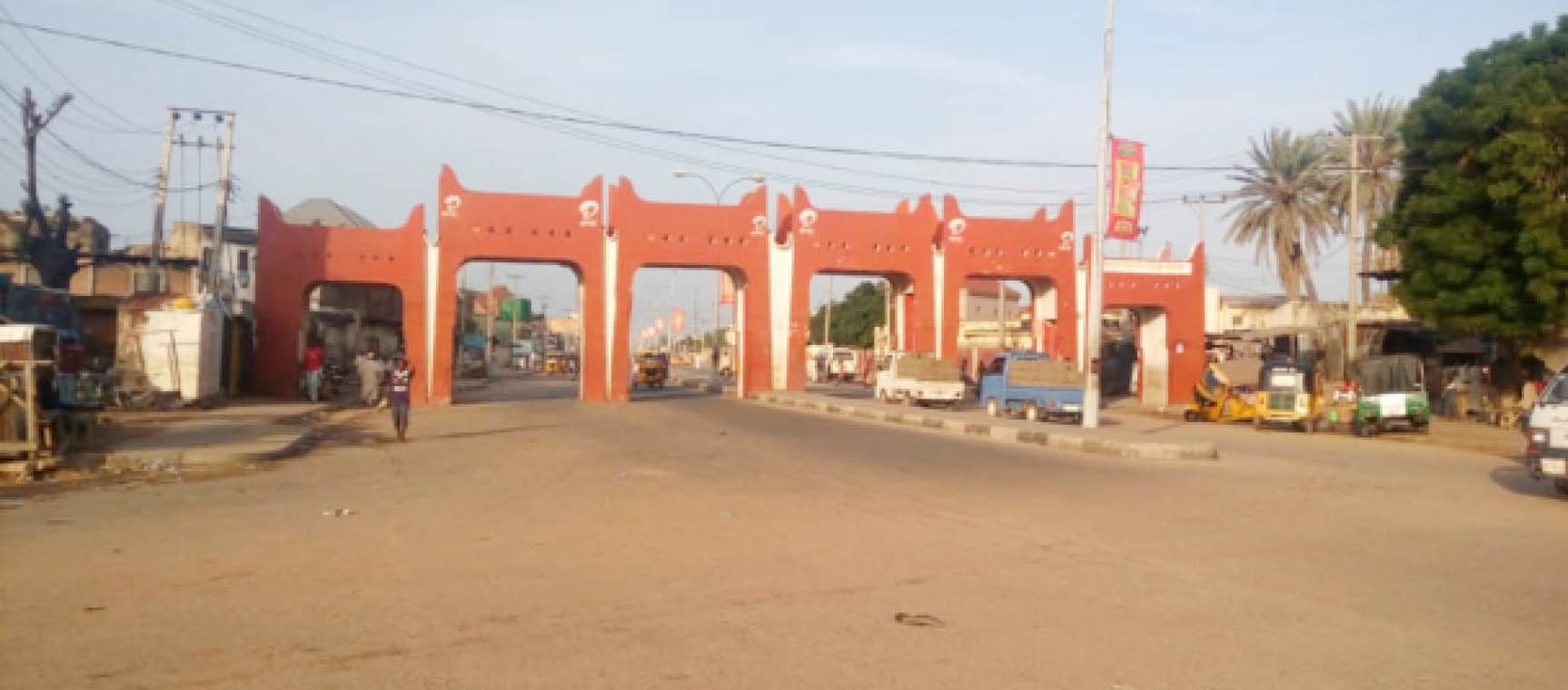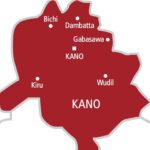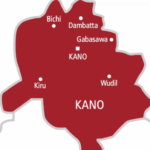Kofar Mata, one of the gates of the ancient Kano kingdom, was a sight to behold, but unfortunately, it is no longer there; and residents are yearning to have it back, Daily Trust on Sunday reports.
Some sources said the ancient gate, one of the relics of the old Kano City, first faced existential problem when a reckless driver hit part of it, and the remaining part later fell to the vagaries of urban expansion.
The gate was believed to have been constructed during the reign of Emir Muhammadu Rumfa (1443-1449), many centuries ago.
Our correspondent gathered that since the over 1,000- year-old gate was pulled down by a truck owned by an expatriate company, many people started forgetting the ancient structure and its historical significance to the culture and tradition of Kano people.
- Give account of N6bn on Ramadan feeding, APC challenges Kano gov
- Climate change: Kano to establish farmers’ field school
Daily Trust on Sunday reports that in ancient times, each kingdom was enclosed with a wall that contained various gates. As a war strategy, there were also ponds said to have been dug beneath the walls from inside and outside to prevent enemies from getting access to the city. The one dug at Kofar Mata is called Dogon Zallo.
It was the duty of the Sarkin Kofa to, at all times, protect and maintain it by providing records of every movement of people passing through the gate. Every gate had a key used for opening and closing it. The keys were allocated to the Sarkin Kofa.
Alhaji Auwalu Uba Kofar Mata, the seventh Sarkin Kofar Mata in his family lineage of gate-keeping, said that in the olden days, there was usually a fixed time to open and close every gate, but today, there is no such thing.
He said the Kofar Mata gate, located a stone-throw to the famous Kofar Mata dyeing pits, also served as a tourist attraction.
It was the responsibility of traditional rulers to assign maintenance duties to the Sarkin Kofa.
Although the federal government, in 1959 declared the gates national monuments and assumed the responsibility of maintaining them, there has been little or no influence on the structures.
Daily Trust on Sunday also reports that the ancient Kano City gates were built in the 11th century but rebuilt over the years to let in articulated vehicles, cars and buses as opposed to the original camels, horses and humans that formed the traffic the first designers had in mind.
The driver of the articulated vehicle that pulled down the Kofar Mata was said to be transporting goods when it hit the gate, smashing its tip, which caused its fall.
Our findings revealed that after the unfortunate incident, what remained of the structure was completely destroyed to prevent its debris from falling on vehicles plying the ever-busy Kofar Mata Road, now known as Muhammadu Abdullahi Wase Road.
After a litigation that followed the incident, the expatriate company was said to have paid the state government the sum of N2million for the reconstruction of the gate through the then Ministry of Works and Infrastructure.
A source at the ministry told our correspondent that the process of reconstruction commenced, but when the 2019 governorship election campaigns started, it was stalled.
Lamenting that this monument and aspect of Kano culture was not preserved, a resident of the area, Malam Tijjani Abubakar said, “If the gate is not reconstructed, the new generation would not have any idea that such structures existed. This is a big setback for us.”
The 75-year-old resident of Kano cited the example of the popular China’s ancient wall and one of the most important monuments on earth. He recalled how the ancient monument put China on the world map, making it a very popular destination for tourists and researchers. He further lamented that on the contrary, Kano ancient gates and city wall were left to deteriorate.
The Sarkin Kofar Mata noted that even while intercity wars had long been relegated to history books, the tradition of building city gates had come to stay. He said the modern variants were decorative, ceremonial or commemorative.
He said that in the past, they used to be meetings with all the 15 gatekeepers or Sarakunan Kofa at the instance of the pioneer executive secretary of the Kano State History and Culture Bureau, Dr Sule Bello, as well as representation from the Gidan Makama Museum. He noted that during the meetings, issues of the maintenance of the gates were discussed.
He said a woman who had lived in the area once paid a visit to the site but could not trace the location of the gate, let alone her relatives’ residence.
He also said the gate was significant to the history of Kano Emirate because the emir passed through it to go the Kofar Mata Eid praying ground for prayers. The emir also passed through it on his return from the traditional Sallah homage (Hawan Nassarawa) he paid to the governor as part of Sallah festivities. Whenever he passed, he always stopped by the gate, where the Sarkin Kofa and residents of the area offered special prayers.
Alhaji Auwalu further noted that the gate was formerly called Kofar Fage because of the vast land outside it, which is now known as Fagge. Obviously, there’s an interesting history behind the gate, added.
He said the name of the gate was changed to Kofar Mata because of a big tree planted by one of its custodians, which attracted many female hawkers.
He further said the gate had undergone two renovations, one of which was done the administration of former Governor Muhammadu Abubakar Rimi in 1981 to pave the way for the expansion of the road leading Sabon Titi. The second renovation was done in 1985 by a former military governor, the late Air Commodore Hamza Abdullahi. It was officially commissioned by the late Chief of Staff, Supreme Council, Brigadier-General Tunde Idiagbon.
Also, while Kofar Kabuga was demolished to allow for the construction of an underpass, Kofar Nassarawa was removed during the construction of a bridge.
Daily Trust on Sunday reports that people of the area have been calling for the reconstruction of the gate. To achieve this, Sarkin Kofar Auwalu revealed that concerned residents, through the Kano Emirate Council, wrote a formal letter to the state government.
Our findings at the Ministry of Works revealed that the project has been finalised and reconstruction would soon commence.
Historians and researchers have warned that such monuments would vanish forever if urgent measures were not taken to preserve them.

 Join Daily Trust WhatsApp Community For Quick Access To News and Happenings Around You.
Join Daily Trust WhatsApp Community For Quick Access To News and Happenings Around You.


